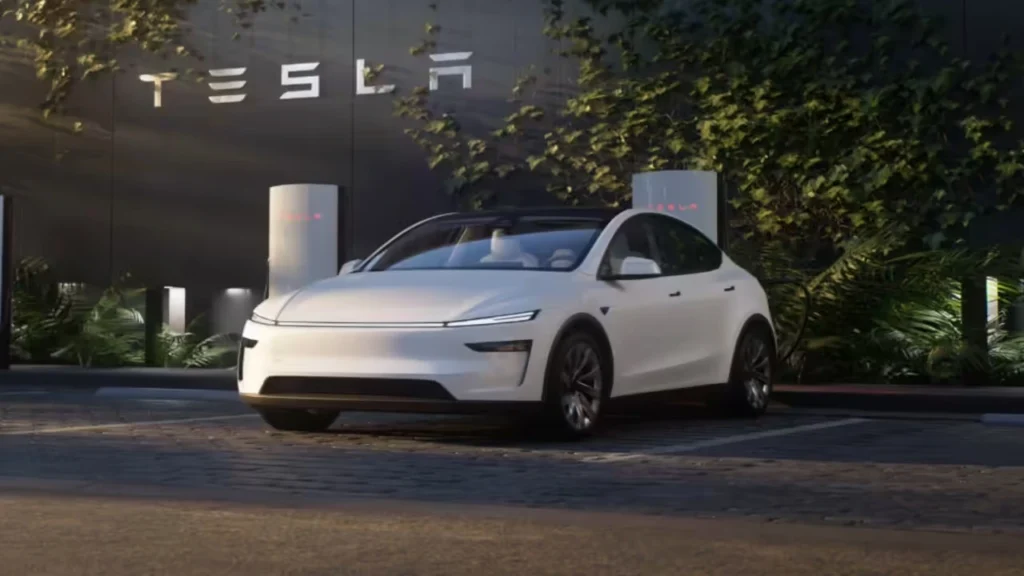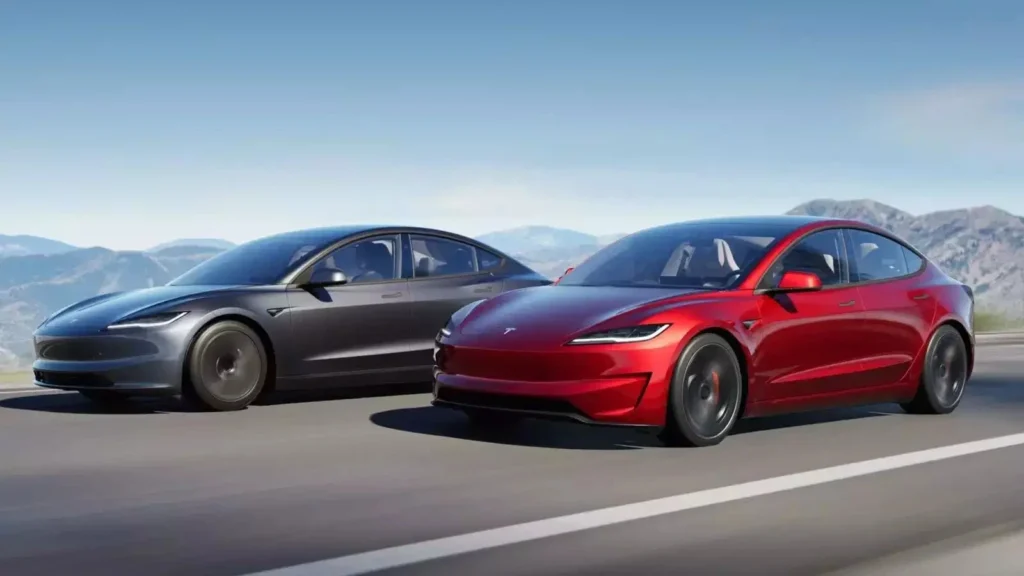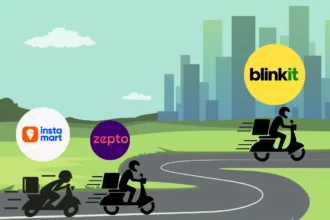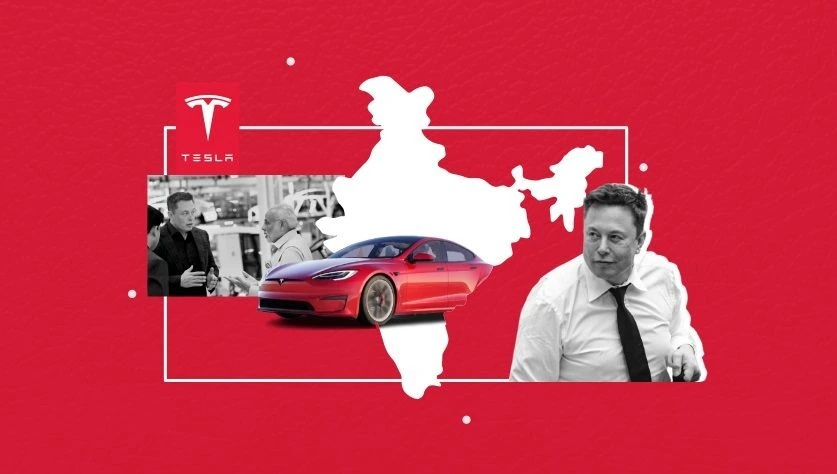Estimated Reading Time: 30-35 minutes (6,241 words)
Introduction
For years, Tesla’s entry into India was the electric car world’s biggest “will they, won’t they” story. Every few months, rumors of Tesla’s launch would surface — followed by silence. For a company that reshaped the EV industry globally, its absence in the world’s third-largest automobile market was puzzling. The potential was massive: over 4 million annual car sales, a growing upper-middle-class, and a booming clean-energy push. Yet, Tesla stayed away — until 2025.
The reasons for this delay weren’t simple. India’s high import tariffs (up to 100%), localized manufacturing rules, charging infrastructure gaps, and bureaucratic hurdles made it hard for Tesla’s global playbook to fit. Elon Musk often pointed out that India’s policies were “not aligned with electric adoption.” Meanwhile, domestic players like Tata Motors, Mahindra, and MG Motors seized the EV opportunity — leaving Tesla as a silent observer.
But 2025 marked a turning point. A combination of policy reform, new import incentives, and a strategic compromise between Tesla and the Indian government finally unlocked the deadlock. Tesla announced its first showrooms and service centers in metro cities, pilot import shipments, and local assembly plans for the Model 3 and Model Y. The timing was perfect: EV demand was peaking, fuel prices were volatile, and Indian consumers were finally ready to pay for performance and sustainability.
This article breaks down the full story —
- Why Tesla didn’t enter India sooner (key barriers & policy standoffs)
- What changed in 2025 (reforms, partnerships, timing)
- What it means for you — whether you’re:
- a buyer planning your first Tesla,
- an affiliate or blogger covering EV trends,
- an investor eyeing Tesla-related opportunities, or
- an EV enthusiast tracking India’s green mobility journey.
- a buyer planning your first Tesla,
Tesla’s late but decisive entry into India isn’t just a business story — it’s a case study in how policy, technology, and timing can reshape entire markets.

The Indian EV Market — Setting the Stage
Before understanding why Tesla took so long to enter India, it’s essential to grasp how India’s EV ecosystem evolved — from a slow-moving niche to one of the most-watched emerging markets in the world.
2.1 India’s EV Uptake So Far
Despite rapid global EV adoption, India’s transition has been steady but uneven. Passenger electric vehicles (EVs) still account for a small fraction of total car sales — roughly 2.5% of all new car sales in 2024, according to Reuters and SIAM (Society of Indian Automobile Manufacturers).
However, 2025 marked a clear policy shift. The Government of India introduced new import relaxations for EV makers willing to invest locally — reducing duties from 100% to as low as 15% on specific models and announcing an EV Manufacturing Scheme to attract foreign players, including Tesla, BYD, and VinFast.
Meanwhile, India’s two- and three-wheeler EV segments are thriving. Startups and established players like Ola Electric, Ather Energy, TVS, and Bajaj are electrifying the streets at record pace. According to NITI Aayog, electric two-wheelers accounted for nearly 9–10% of new sales in 2024, and three-wheelers have already crossed 50% electrification in urban areas.
However, the passenger car EV segment continues to be highly price-sensitive. The average EV still costs 30–40% more than its petrol counterpart, making affordability a major hurdle. Yet, as charging infrastructure expands and battery prices fall, the foundation is being laid for mass adoption.
Key Market Insights (2024–2025):
- EVs: ~2.5% of car sales in 2024 (Reuters, SIAM)
- Government incentives under FAME-II & new import schemes extended to 2025–26
- Battery prices down by over 80% since 2013 (BloombergNEF)
- Charging stations grew 5× between 2020–2024 (CEA & Power Ministry)
- India targets 30% EV sales share by 2030 (NITI Aayog)
2.2 Why India Matters for Tesla
India represents the final frontier among major global automotive markets. It’s already the third-largest auto market by volume, behind only China and the U.S., with over 4.1 million cars sold in FY2024.
For Tesla, India isn’t just another country — it’s a strategic long-term growth bet:
- Massive market potential: A fast-growing middle class with rising disposable income.
- Government push for clean mobility: Policy reforms, PLI schemes, and EV infrastructure investments.
- Sustainability alignment: India’s COP26 and 2070 net-zero goals create a strong narrative for Tesla’s mission.
- Regional influence: A successful entry here could unlock broader South Asian markets (Bangladesh, Sri Lanka, Nepal).
Yet, Tesla’s path isn’t straightforward. India’s unique structural and operational challenges have long deterred foreign automakers:
Major Barriers Tesla Faced:
- 🚗 Import Tariffs: Up to 100% on completely built EVs (CBUs) made Tesla models unaffordable.
- 🏭 Localization Mandates: Government insisted Tesla must build or assemble locally to qualify for incentives.
- 🔌 Infrastructure Gaps: Less than 10,000 public charging stations nationwide by early 2024.
- 🔄 Regulatory Complexity: Approval processes, compliance norms, and state-level EV policies vary widely.
- ⚙️ RHD Adaptation: India’s right-hand-drive format required production changes from Tesla’s primary LHD assembly lines.
Despite these hurdles, the potential payoff is enormous. If Tesla establishes a local assembly base (as hinted for Gujarat or Maharashtra), it could tap into not only domestic demand but also export opportunities to other RHD markets like the UK, Australia, and Japan — turning India into a regional EV hub.
In short: India’s EV market may have started slow, but it’s accelerating fast. And Tesla’s 2025 decision to finally engage reflects the convergence of policy alignment, consumer readiness, and global strategic timing.
Key Reasons Tesla Delayed Entry into India
Tesla’s India journey has been one of anticipation and frustration. While Elon Musk repeatedly expressed interest in bringing Tesla to India as early as 2016, multiple structural, policy, and economic hurdles delayed the company’s entry. Each obstacle reflected a deeper issue in aligning India’s protectionist policy with Tesla’s global-scale manufacturing model.
Below, we unpack the five major reasons why Tesla held back for so long — and what they reveal about India’s evolving EV landscape.
3.1 High Import Duties & Tariffs
One of the biggest deterrents for Tesla was India’s extraordinarily high import duties on fully built cars. Historically, India levied:
- 60% import duty on cars under $40,000 (CIF value)
- 100–110% duty on cars priced above $40,000 (CBU units) — among the highest globally. (Source: Reuters, Ministry of Finance, India)
This meant that even Tesla’s entry-level Model 3 (priced around $40,000 in the U.S.) would double in price when imported to India — landing close to ₹70–80 lakh, placing it in the ultra-premium segment.
In March 2024, the government finally introduced a conditional relaxation:
- EV makers could import up to 8,000 vehicles per year at a reduced 15% import duty,
- but only if they commit at least $500 million (₹4,100 crore) investment in local manufacturing or assembly within three years. (Source: Reuters, Business Standard, Economic Times)
Elon Musk had publicly criticized these tariffs, calling them “the steepest in the world”, arguing that Tesla couldn’t “sell cars in India unless at least temporary import relief was provided.”
In short:
Tesla’s pricing model didn’t align with India’s tariff structure. Importing CBUs made the cars prohibitively expensive, killing affordability and scalability before launch.
3.2 Localization & Manufacturing Requirements
India’s “Make in India” and Atmanirbhar Bharat policies prioritize local manufacturing — not just imports. The new EV policy made this explicit:
“Companies will be allowed to import a limited number of electric cars at a lower import duty of 15% if they commit to investing $486 million and begin manufacturing within three years.” (Reuters, March 2024)
For Tesla, this presented a strategic dilemma.
- Tesla’s success model is built on Gigafactories — massive, high-efficiency production hubs (like Shanghai, Berlin, and Texas).
- Setting up a full-scale manufacturing plant in India first, before testing demand, would be financially risky.
- Supply chain localization (cells, batteries, components) is still maturing in India — making full integration difficult in the short term.
In essence, India wanted local commitment first, sales later, while Tesla preferred market validation first, factories later. That policy mismatch stalled negotiations for nearly half a decade.
Case in point:
- Tesla scouted potential factory sites in Gujarat, Maharashtra, and Tamil Nadu as early as 2022.
- Talks stalled when the government refused to waive import duties without a firm local manufacturing timeline.
3.3 Infrastructure & After-Sales Challenges
Even if Tesla had cleared regulatory hurdles, India’s EV ecosystem readiness posed another major roadblock.
- As of 2024, India had just under 10,000 public charging stations, compared to over 1.8 million in China. (Source: CEA, NITI Aayog)
- Long-distance inter-city chargers were scarce, limiting usability for Tesla’s long-range vehicles.
- The government policy even capped that only 5% of a company’s investment could be counted toward charging infrastructure, reducing Tesla’s flexibility to build its own Supercharger network as part of its capital commitment. (Source: Reuters)
Additionally, after-sales service and spare parts infrastructure in India is expensive to establish for a premium global brand:
- India’s geographic diversity — from metros to rural regions — makes maintaining consistent service standards costly.
- Training, logistics, and repair networks require scale before profitability.
- Tesla’s direct-to-consumer model faces regulatory friction in India, where dealer-based structures still dominate.
Bottom line: The infrastructure gap made Tesla’s experience-first model hard to replicate without massive upfront investment.
3.4 Price-Sensitive Market & Positioning
India’s auto market is value-driven, not luxury-driven. Over 75% of passenger cars sold in India are priced below ₹15 lakh, with compact and mid-size vehicles dominating sales (SIAM data).
A Tesla — even its cheapest variant — would easily cross ₹50–60 lakh, instantly placing it in the luxury niche. That’s a fraction of the market, dominated by brands like Mercedes, BMW, and Audi, which sell under 50,000 luxury cars annually combined.
Meanwhile, domestic EV players such as Tata Motors (Nexon EV, Punch EV) and MG Motor (ZS EV) have already built consumer trust at half or one-third of Tesla’s expected price.
Thus, even if Tesla entered earlier, the ROI and market penetration potential would have been low until:
- Local manufacturing reduced prices, or
- A “Model 2”/affordable Tesla (~$25,000) became reality.
Tesla’s strategic patience was, therefore, a business decision — to wait until the ecosystem, affordability, and buyer readiness aligned.
3.5 Policy & Domestic Industry Pressure
Another subtle but critical reason was political economy.
India’s domestic automakers — Tata, Mahindra, Ola Electric — have collectively invested over $10 billion in EV production, infrastructure, and R&D.
They lobbied strongly against granting Tesla major import duty relief, arguing it would:
- Undermine local manufacturing efforts,
- Create an uneven playing field, and
- Hurt job creation and industrial investment already committed by Indian players.
The government, balancing its Make-in-India mandate and Tesla’s global allure, chose caution over quick wins. As per Economic Times (2024), the policy design that emerged was a compromise — incentives, but only if Tesla builds in India.
This balance delayed Tesla’s entry but also strengthened India’s domestic EV ecosystem, ensuring Tesla’s eventual arrival would enhance — not replace — local capacity.
✅ Summary: Why Tesla Waited
| Factor | Challenge | Tesla’s Constraint |
| Import Tariffs | Up to 110% on CBUs | Made cars unaffordable |
| Local Manufacturing Mandate | $500M investment required | Risky before testing demand |
| Infrastructure | <10,000 chargers nationwide | Limited usability & service coverage |
| Market Sensitivity | Price-driven consumers | Limited premium EV demand |
| Domestic Lobby Pressure | Protectionist stance | Restricted import relaxation |
In essence:
Tesla didn’t avoid India because of disinterest — it waited for alignment. In 2025, when India’s policies softened, infrastructure expanded, and demand matured, Tesla finally found the right window to enter.
What Changed in 2025 — The Tipping Point
After years of stalled negotiations and hesitation, 2025 marked a turning point for Tesla’s India ambitions. A mix of policy reforms, investment clarity, and geopolitical alignment finally created an environment where Tesla could move forward without compromising its global strategy. Here’s what changed and why it mattered.
4.1 New EV Policy: Import-Duty Cut & Investment Criteria
For years, Tesla pushed for lower import duties before committing to local manufacturing. The March 2024 EV policy announcement finally offered a realistic framework:
- Automakers committing at least USD 500 million (₹4,000+ crore) in investment and establishing local manufacturing within three years would qualify for import duty reductions.
- The new rule allowed 15% import duty on up to 8,000 EV units annually, compared to the earlier 70–100% import tax on Completely Built Units (CBUs).
(Sources: Reuters, Economic Times, Ministry of Heavy Industries)
By June 2025, the policy was finalized and notified in the Gazette, making it legally actionable. This change balanced Tesla’s demand for lower import barriers with India’s need for domestic job creation and industrial growth.
Key implications:
- Tesla could now enter via imports, test the market, and scale operations before committing to full-scale manufacturing.
- India secured Tesla’s long-term manufacturing commitment, potentially bringing advanced EV technology and supply-chain investment.
- Other global automakers like VinFast and BYD also benefited, signaling a broader EV liberalization wave.
4.2 Tesla’s First Showroom & Initial Imports (2025 Launch)
By July 2025, Tesla officially opened its first Indian showroom in Mumbai’s Bandra-Kurla Complex (BKC) — a symbolic yet strategic location targeting affluent early adopters and tech enthusiasts.
The company began taking pre-orders for the Model Y, with initial imports from Tesla’s Shanghai Gigafactory, leveraging its right-hand-drive configuration and proximity.
(Source: Reuters, Bloomberg, Autocar India)
Tesla’s entry in 2025 was phased and strategic:
- Phase 1 (2025–26): Import & retail limited units of Model Y and Model 3.
- Phase 2 (2027–28): Evaluate Gigafactory India site (likely Gujarat or Maharashtra).
- Phase 3 (post-2028): Begin local assembly/manufacturing, including lower-cost variants or an India-focused model.
This cautious approach allowed Tesla to:
- Build brand presence and test consumer response.
- Assess infrastructure readiness (charging, service centers, logistics).
- Align operations with India’s evolving regulatory and tax framework.
4.3 Charging Infrastructure, Battery Incentives & Global Trade Shifts
While India’s new EV policy emphasized manufacturing, supporting infrastructure incentives also evolved in 2025.
- The government offered 5% FAME-III allocation for public charging infrastructure and battery production-linked incentives (PLI) for lithium-ion and sodium-ion technologies.
- However, the policy capped charging infrastructure investment credits at 5% of total automaker investment — signaling India’s clear intent: “Manufacture here, don’t just import and plug in.”
On the global trade front, U.S.–India relations deepened in green technology collaboration. India eased raw material import duties for lithium, nickel, and cobalt, critical for EV battery production.
(Sources: Economic Times, Mint, Ministry of Commerce 2025)
Together, these moves strengthened India’s EV supply-chain attractiveness, aligning with Tesla’s global battery sourcing and production goals. The strategic combination of market access + supply-chain incentives transformed India from a high-risk, high-tariff market to a potential future export hub.
4.4 The Bigger Picture — Why 2025 Was the Right Moment
In essence, Tesla’s entry in 2025 wasn’t about sudden enthusiasm—it was about strategic timing.
- The policy puzzle finally fit Tesla’s long-term model.
- India’s EV ecosystem matured — from Tata’s Nexon EV to Mahindra’s XUV400, showing proof of concept for local adoption.
- Charging networks (Tata Power, Statiq, Ather Grid) expanded to over 10,000 public chargers nationwide, improving feasibility for premium EV owners.
- The post-pandemic demand recovery and rising disposable incomes created an aspirational consumer base for global EV brands.
2025 marked the alignment of regulatory clarity, infrastructure readiness, and market maturity — setting the stage for Tesla’s long-awaited Indian debut.
Implications for Consumers, Investors, and Affiliates
Tesla’s long-awaited India entry in 2025 doesn’t just impact the auto industry — it reshapes opportunities for consumers, investors, affiliate marketers, and EV ecosystem players. Whether you’re planning to buy a Tesla, invest in EV stocks, or build content around the EV boom, the ripple effects are enormous.
5.1 For Buyers: What to Watch Before You Order a Tesla in India
For Indian buyers, Tesla’s debut is exciting but also comes with practical considerations. Beyond the hype, price, service, and long-term ownership costs remain key factors.
1. Pricing & Variants
Even with reduced import duties under the 2025 EV policy, Tesla’s pricing remains premium.
- The Model Y — Tesla’s first launch in India — is expected to cost around ₹55–65 lakh (USD 65,000–70,000) after duties and logistics. (Source: Reuters, Autocar India, Economic Times)
- Tesla’s right-hand-drive imports from the Shanghai Gigafactory ensure compatibility, but customization and homologation add to the price tag.
For context, Tata Nexon EV or Mahindra XUV400 cost between ₹15–22 lakh — making Tesla nearly 3x more expensive, restricting its market to urban, affluent consumers.
2. Charging Network & After-Sales
Tesla has announced plans to integrate with India’s Bharat Charge Alliance and roll out its first Supercharger stations in Mumbai, Delhi, and Bengaluru by early 2026.
However, buyers should still evaluate:
- Service center coverage: Initially limited to major metros.
- Warranty and spare parts logistics: Imported components may mean longer repair times and higher costs.
- Home-charging setup: Apartment dwellers may face challenges installing high-voltage charging systems without cooperative housing support.
(Tip: Check if your apartment or gated community allows EV charging before booking a Tesla.)
3. Resale Value & Total Cost of Ownership (TCO)
Tesla’s long-term resale value depends on battery degradation, software support, and availability of parts.
- Imported luxury EVs typically depreciate faster in India due to limited service ecosystem and policy uncertainty.
- Buyers should compare TCO (Total Cost of Ownership) — including electricity cost, maintenance, and insurance — against domestic EVs using online calculators.
Quick TCO Estimate (5-year horizon):
| Model | On-Road Price | 5-Year Running Cost | Estimated Resale Value | Total Cost (INR) |
| Tesla Model Y | ₹60 lakh | ₹3.5 lakh | ₹35 lakh | ₹28.5 lakh |
| Tata Nexon EV LR | ₹21 lakh | ₹2 lakh | ₹10 lakh | ₹13 lakh |
(Indicative only — excluding financing/insurance variations)
Bottom line: Tesla’s ownership will remain aspirational but not necessarily cost-efficient for Indian consumers in 2025.

5.2 For Investors & Affiliates: Monetization Angles in the Tesla-India Story
Tesla’s India entry opens a goldmine of opportunities for content creators, affiliate marketers, and early investors looking to ride the EV wave.
1. Affiliate Marketing Opportunities
Tesla’s arrival creates micro-niches that affiliate marketers can dominate:
- EV Accessories: Portable chargers, wall-mounted home charging units, Tesla-compatible adapters, floor mats, and mobile connectors.
- EV Insurance: High-value imported car insurance, battery protection plans, and premium add-ons.
- Import Assistance & Services: Consultants offering RTO registration, tax filing, or import logistics for EV owners.
- Home Power Solutions: Solar panels, inverters, and Tesla Powerwall alternatives.
💡 Tip: Focus on “Tesla-compatible” accessories or “EV insurance comparison tools” — these have high search volume and low competition in India right now.
2. Lead Magnets & Email Funnels
To build a subscriber base around EV content, use data-driven lead magnets:
- TCO Calculator: “Compare Tesla vs Tata EVs – Real 5-Year Ownership Cost.”
- Waiting List Alerts: “Be the first to know when Tesla opens booking slots in your city.”
- Import Cost Breakdown PDFs: Explaining duties, GST, RTO, and insurance for premium EVs.
These tools can convert high-intent traffic (Tesla enthusiasts, investors, buyers) into email leads for future monetization via affiliate products or sponsored posts.
3. Sponsorships & Ads
As Tesla’s brand presence grows, automotive finance and insurance firms will compete for placement on high-traffic EV blogs and YouTube channels.
Potential sponsorships include:
- EV-focused financial lenders (Axis Bank, HDFC, Tata Capital)
- Luxury EV insurance providers
- Auto-detailing and accessories brands (CarDekho, CarWale, Amazon Auto)
If your content niche is EV reviews or cost breakdowns, expect CPM rates 3–4x higher than general auto content once Tesla traffic peaks in India.
4. Content Angles for SEO & Engagement
Tesla’s India entry will drive millions of search queries in 2025–26. High-performing content formats include:
- Comparative articles: “Tesla vs Tata EV – Which Makes More Sense in India?”
- Explainer guides: “Why Tesla Cars Are Expensive in India (2025 Breakdown)”
- Investment insights: “Will Tesla’s Entry Boost India’s EV Stocks?”
- Affiliate posts: “Top 10 Tesla Accessories You Can Buy in India (2025 Edition)”
These topics combine high CPC keywords, strong affiliate integration potential, and broad audience appeal.
5.3 Investor Outlook: EV Ecosystem and Stock Opportunities
While Tesla’s stock ($TSLA) remains volatile globally, India’s EV ecosystem offers alternative ways to participate:
- Domestic EV players: Tata Motors, Mahindra Electric, and MG India.
- Component manufacturers: Exide, Amara Raja, and Tata Chemicals (battery ecosystem).
- Infrastructure enablers: Tata Power, Statiq, and ChargeZone.
- Green ETFs and mutual funds with EV exposure.
The “Tesla effect” — once it starts local assembly — could trigger a sectoral rally across auto ancillaries and battery supply chains, much like what happened in China after Tesla’s Shanghai Gigafactory launch in 2019.
(Source: Morgan Stanley India EV Report 2025, ET Auto, Reuters)
Case Study: Tesla’s Model Y Launch in India (2025)
The much-anticipated Tesla Model Y launch on 15 July 2025 marked a historic moment for India’s EV sector — symbolizing not only Tesla’s long-delayed entry but also a major policy and market shift. The event, held in Mumbai, generated massive buzz across social media and financial news outlets, positioning Tesla as both a status symbol and a technology benchmark in India’s evolving electric vehicle ecosystem.
6.1 Launch Overview & Pricing Structure
According to Reuters (July 2025) and Economic Times Auto, Tesla officially launched the Model Y Long Range (dual-motor AWD) variant in India at a starting price of around ₹60–65 lakh (≈ US$70,000) — inclusive of import duties, logistics, and GST.
Key Highlights of the Launch:
- Event date: 15 July 2025
- Location: Tesla’s first Indian showroom, Bandra-Kurla Complex (BKC), Mumbai
- Initial variant: Model Y Long Range AWD (imported from Shanghai Gigafactory)
- Planned expansion: Second showroom in Delhi NCR by Q4 2025, with service centers in Bengaluru and Pune
- Delivery window: Late 2025 for early reservations
This pricing instantly positioned the Model Y in the luxury EV segment, competing not with Tata or Mahindra EVs, but with imported rivals like the BMW iX1, Kia EV6, Volvo XC40 Recharge, and BYD Seal.
6.2 Tesla’s Entry Strategy: “Import First, Build Later”
Tesla’s 2025 launch strategy reflects a calculated and phased market entry, designed to minimize risk while testing India’s EV readiness.
The company’s approach includes:
1. Import-Driven Launch:
Tesla leveraged the March 2024 EV policy, which reduced import duties to 15% for automakers committing $500 million+ investment and local manufacturing within three years. This allowed Tesla to import a limited number of cars while building market awareness.
2. Brand Establishment Before Manufacturing:
Rather than rushing into factory commitments, Tesla focused on:
- High-visibility retail presence in Mumbai and Delhi.
- Localized digital marketing, targeting affluent buyers and tech enthusiasts.
- Service and charging pilot rollout in top-tier cities to ensure customer satisfaction.
3. Infrastructure-Led Ecosystem:
Tesla announced plans to set up 10–12 Supercharger stations across major cities by mid-2026, and partnerships with local charging networks like Tata Power EZ Charge and Statiq for interoperability.
This staged approach mirrors Tesla’s early playbook in China (2014–2019) — where it began with CBU imports and established brand dominance before investing billions in the Shanghai Gigafactory.
6.3 Pricing, Market Positioning & Consumer Segment
Tesla’s India pricing strategy is aspirational, not competitive. While Tesla dominates the mid-premium EV market in the U.S. and Europe, in India it must navigate a highly price-sensitive and infrastructure-limited landscape.
Price Comparison (2025):
| Market | Model Y Base Price (USD) | Approx. INR Equivalent | Import/Local Status |
| USA | $43,990 | ₹36 lakh | Locally made |
| China | $44,000 | ₹37 lakh | Locally made |
| Germany | $47,000 | ₹39 lakh | Locally made |
| India | $70,000 | ₹60–65 lakh | Imported (CBU) |
The 25–35% price differential (even after the 2025 tariff cut) clearly positions Tesla in the premium luxury bracket, competing for a small but influential audience — entrepreneurs, executives, celebrities, and early adopters.
In contrast, India’s mass-market EV segment remains dominated by:
- Tata Motors (Nexon EV, Punch EV, Tiago EV) — ₹10–20 lakh range
- Mahindra XUV400 — ₹15–20 lakh range
- MG ZS EV — ₹25–30 lakh range
- BYD Atto 3 — ₹33–35 lakh range
With most Indian EVs priced under ₹25 lakh (~US$25,000), Tesla’s entry is clearly top-down, targeting brand visibility rather than immediate volume.
6.4 Market Reactions & Early Consumer Response
The initial reception of the Tesla Model Y in India has been a mix of excitement, skepticism, and aspiration.
Positive trends:
- High pre-booking interest: Tesla reportedly received over 2,000 pre-orders within the first week of launch. (Source: Autocar India, 2025)
- Buzz on social media: #TeslaIndia trended on X (formerly Twitter) and Instagram for over a week post-launch.
- Brand halo effect: Luxury EV demand spiked — even for rival brands like BMW and BYD — due to heightened awareness.
Challenges voiced by analysts and buyers:
- Limited charging ecosystem: Particularly outside metros.
- Unclear service timelines and spare-part pricing.
- Steep insurance and registration costs (luxury EV insurance premiums can reach ₹3–4 lakh annually).
Despite these concerns, Tesla’s entry is viewed as transformative — likely to accelerate policy upgrades, local manufacturing plans, and EV infrastructure investments across India.
6.5 Key Takeaways from the Model Y Case Study
- Tesla’s India debut is symbolic, not just commercial. It signals that India is finally on the global EV map.
- The entry model is deliberately premium — building aspiration before expansion.
- Policy clarity and infrastructure support in 2025 made the launch viable, not just hype.
- Local competition remains strong, meaning Tesla must adapt (possibly with a smaller, India-built model) to scale beyond elite buyers.
- Investors and affiliates can expect sustained EV attention in media, policy, and financial circles throughout 2025–27.
Quick Facts & Statistics: Tesla and India’s EV Landscape (2025 Snapshot)
The following data offers a clear, at-a-glance overview of the key metrics shaping Tesla’s 2025 entry into India — from EV penetration rates and import duties to pricing and investment requirements. These figures help explain why 2025 became the inflection point for India’s EV industry and why Tesla finally saw a viable path to entry.
⚡ India’s EV Market in Numbers
| Metric / Indicator | Value / Insight (as of 2025) | Source / Notes |
| Passenger-car EV market share | ~2.5% of new car sales in 2024 | Reuters, NITI Aayog 2024 |
| Two-wheeler EV market share | ~8–9% of total two-wheeler sales | SIAM, Economic Times (2024) |
| India’s overall auto market ranking | 3rd largest globally (by volume) | OICA, 2025 |
| Import duty on EVs (pre-policy) | 70–110% on Completely Built Units (CBUs) | Reuters, ET Auto (2023) |
| Reduced import duty under new policy (2024) | 15% for automakers committing $500M+ investment & local manufacturing within 3 years | Reuters, Government of India Gazette (2024) |
| Investment threshold for EV policy eligibility | Minimum $500 million (≈ ₹4,000 crore) | Reuters, Ministry of Heavy Industries (2024) |
| Tesla’s first model in India | Model Y Long Range (AWD) | Reuters, Autocar India (2025) |
| Launch price (India) | ≈ ₹60–65 lakh (≈ US$70,000) | Reuters, ET Auto, July 2025 |
| Tesla’s first India showroom | Mumbai (BKC) — opened July 2025 | Reuters, Business Standard |
| Planned next launch cities | Delhi, Bengaluru, Pune (2025–26) | ET Auto, July 2025 |
| Charging network rollout (Phase 1) | 10–12 Superchargers in top-tier metros by 2026 | Tesla India PR, July 2025 |
| Domestic EV competitors in India | Tata Motors, Mahindra, MG, BYD, Hyundai | SIAM, 2025 |
| Target local manufacturing timeline (for duty compliance) | Within 3 years (by 2028) | Reuters, Government EV Policy (2024) |
| Global Tesla Gigafactories before India | 6 operational (U.S., China, Germany, Mexico under construction) | Tesla Annual Report 2024 |
| Average Tesla Model Y price (U.S.) | ~$43,990 USD | Tesla.com (2025) |
| Price differential vs U.S. market | ~60% higher in India due to duties, logistics, and taxes | ET Auto, 2025 |
💡 Quick Tip Box: What Indian Buyers Should Know Before Booking a Tesla
Tip 1: Don’t go by the sticker price — imported EVs in India incur on-road costs up to 25–30% higher due to registration, insurance, and handling fees.
Tip 2: Check Supercharger availability or compatibility with local networks (like Tata Power or Statiq) in your city before purchase.
Tip 3: For resale or maintenance, imported EVs may have longer service timelines and higher part costs, so always compare Total Cost of Ownership (TCO).
Tip 4: If you’re an early adopter, consider joining EV owner forums or Telegram communities to stay updated on Tesla service center launches and charging partnerships.
⚙️ Why These Numbers Matter
These statistics show that India’s EV ecosystem in 2025 is still in its early but accelerating phase. Tesla’s decision to enter now — despite high pricing and infrastructure gaps — underscores confidence in India’s policy direction, growing demand, and potential as a future export hub.Bottom line:
India’s EV share may still be small today, but the policy reforms of 2024–25 mark the beginning of a decade where Tesla — and other global EV giants — will shape the next wave of India’s clean mobility revolution.
FAQs Section
1. Why didn’t Tesla launch in India earlier despite strong demand?
Tesla’s delay wasn’t due to lack of interest — it was pure economics and policy friction.
For years, India’s import duties on fully built cars (CBUs) were among the highest in the world — up to 100–110% in some cases.
That meant a Tesla Model 3, which sells for ~$40,000 (₹33 lakh) in the U.S., would have cost ₹70–80 lakh or more in India once duties, logistics, and registration were added.
Such pricing placed Tesla firmly in the ultra-premium niche, far beyond the reach of India’s price-sensitive middle-class car buyers.
Elon Musk often spoke publicly about this barrier, tweeting that India had “the highest import duties in the world” and that entering the market “didn’t make sense” without relief or clarity.
Other factors also held Tesla back:
- India required local manufacturing to qualify for any import duty concessions.
- Charging infrastructure was still immature before 2023.
- Tesla’s supply chain and gigafactory model rely on scale — and the company wasn’t ready to localize before knowing if the demand justified it.
In short: Tesla didn’t skip India — India’s economic equation made entry unattractive until policy changed.
2. What changed in 2025 that finally allowed Tesla to enter India?
2025 became Tesla’s year in India because policy finally caught up with potential.
In early 2024, the Government of India announced a revised EV policy, which became operational in mid-2025.
Key highlights:
- Import duty reduced to 15% (from 70–100%) for automakers that invest at least $500 million (₹4,000 crore) and start domestic manufacturing within 3 years.
- A limited quota of EV imports allowed annually for those who commit to localization.
- Simplified approvals for charging network rollout and state-level EV retail licensing.
This new framework opened the door for Tesla’s long-awaited entry.
By July 2025, Tesla inaugurated its first India showroom in Mumbai’s Bandra Kurla Complex (BKC) — an area often called India’s Wall Street — and started taking orders for the Model Y.
Showrooms in Delhi and Bengaluru are planned next, with service and charging hubs to follow.
In short: 2025 wasn’t just Tesla’s entry — it was India signalling to the world that it was ready to welcome global EV giants, on mutually beneficial terms.
3. Does the 15% import duty apply to all Tesla cars now?
Not exactly.
The 15% import duty is conditional — part of a performance-linked investment scheme rather than a blanket exemption.
Here’s how it works:
- The reduced duty applies only if an automaker pledges a minimum $500 million investment.
- The company must begin manufacturing within three years (CKD/SKD or full assembly).
- Only a fixed number of EVs can be imported at the 15% rate during this interim period.
If Tesla fails to meet the local-manufacturing commitment or crosses its import quota, duties revert to standard rates (70–100%).This approach ensures policy accountability — India welcomes Tesla, but only if it contributes to the domestic ecosystem.
4. Will Tesla build a factory in India right away?
Not immediately — but it’s definitely on the table.
Tesla is entering India in three clear phases:
- Phase 1 (2025–2026): Import-led entry.
- Focus on building showrooms, service centers, and a small Supercharger network.
- Gauge real demand and consumer behaviour in India’s luxury-EV market.
- Focus on building showrooms, service centers, and a small Supercharger network.
- Phase 2 (2026–2028): Local assembly setup (CKD/SKD model).
- Partnering with Indian suppliers and state governments offering incentives (Gujarat, Maharashtra, Tamil Nadu are contenders).
- Possibly produce India-specific variants or a mid-tier “Model 2”.
- Partnering with Indian suppliers and state governments offering incentives (Gujarat, Maharashtra, Tamil Nadu are contenders).
- Phase 3 (2028 onward): Full-scale manufacturing or exports from India.
- Dependent on volume, supply chain maturity, and export potential to Southeast Asia.
- Dependent on volume, supply chain maturity, and export potential to Southeast Asia.
Tesla’s long-term play is clear: India isn’t just a market; it’s a strategic manufacturing and software-hub opportunity, especially with India’s growing EV and renewable-energy synergy.
5. How affordable will Tesla be for Indian buyers?
In short: still expensive, but slightly more accessible than before.
Even after the 2025 duty reforms, Tesla’s Model Y retails around ₹60–65 lakh (≈ US$70,000).
That’s significantly higher than mainstream EVs from Tata Motors (Nexon EV, ₹15–20 lakh) or Mahindra XUV400 (~₹19 lakh).
So Tesla’s initial customers are:
- High-income tech professionals and entrepreneurs.
- Early EV adopters in metros like Mumbai, Delhi, and Bengaluru.
- Enthusiasts seeking global-quality performance and software innovation.
However, the story doesn’t end there.
Tesla’s real market disruption could come if it launches a smaller, India-focused model (often called “Model 2” or “Model Q”) priced between ₹25–30 lakh — a segment that could change the EV game completely by 2027–28.
6. How does Tesla compare to domestic EVs in India?
India’s EV scene is more competitive than it looks.
Companies like Tata Motors, Mahindra, BYD, MG, Hyundai, and even Ola Electric (upcoming) are investing heavily.
| Category | Tesla (Imported) | Domestic Players (Tata, Mahindra, BYD) |
| Price Range | ₹60–70 lakh | ₹10–30 lakh |
| Range (per charge) | 450–540 km (WLTP) | 250–450 km |
| Charging Options | Tesla Superchargers (limited) | Domestic/3rd-party chargers widely available |
| Service Network | Nascent (Mumbai, Delhi planned) | Nationwide coverage |
| Target Market | Luxury buyers | Mass-market and fleet |
Tesla’s software, design, and performance are unmatched — but for most Indians, total cost of ownership (TCO) remains the deciding factor.
Hence, Tesla’s appeal is aspirational, while domestic players dominate on volume and practicality.
7. What are the main risks for Tesla in India?
Tesla’s India strategy, though exciting, isn’t without serious risks:
- Extreme price sensitivity: Over 90% of India’s car market lies below ₹25 lakh.
- Infrastructure gaps: Public charging networks are still sparse in Tier-2 cities.
- Policy uncertainty: Shifts in taxation, FAME incentives, or import rules could impact Tesla’s cost structure.
- Competition: Domestic OEMs are scaling faster, while global rivals (Hyundai, BYD) have already localized assembly.
- Operational complexity: India’s regulatory compliance, logistics, and service ecosystem can challenge even seasoned automakers.
Tesla will need local partnerships, sustained investment, and policy patience to truly scale here.
8. What opportunities does Tesla’s entry create for investors and affiliates?
Tesla’s arrival doesn’t just shake up the EV market — it opens new income verticals for content creators, affiliates, and investors.
For Affiliates and Marketers:
- Home charging setups, EV wall connectors, and accessories.
- Specialized insurance, EMI, or financing for imported EVs.
- Import consultancy and compliance advisory.
- EV product blogs: “Tesla vs Tata EV 2025”, “How Much Does a Tesla Cost to Maintain in India?”, etc.
For Investors:
- Watch Indian auto-component suppliers and battery firms — they could benefit from localization.
- Renewable and charging infrastructure stocks may see upside from Tesla-related activity.
- States offering manufacturing incentives (like Gujarat, Maharashtra) could attract FDI and allied industries.
For Bloggers/Creators:
- “Tesla India launch updates” and “Supercharger location maps” can be strong SEO magnets.
- “Total Cost of Ownership (TCO)” calculators comparing Tesla vs Indian EVs offer valuable lead magnets.
9. Will Tesla’s entry accelerate India’s EV infrastructure?
Yes — perhaps more than any single government scheme could.
Tesla’s Supercharger rollout will likely trigger a chain reaction in the private EV infrastructure space.
Already, Indian firms like Tata Power, Statiq, and ChargeZone have announced accelerated charging-network expansion plans anticipating Tesla’s arrival.
The government too is facilitating “EV corridors” across national highways under the PM Gati Shakti initiative.
Tesla’s entry also brings consumer awareness — many new buyers will explore EVs after seeing the Tesla buzz, benefiting the entire ecosystem.
10. Is India now poised to become a global EV manufacturing hub?
Increasingly, yes.
India’s 2025 EV policy is designed not just for Tesla, but to build a foundation for long-term EV manufacturing and exports.
Several trends support this:
- The government’s Production-Linked Incentive (PLI) scheme for advanced batteries.
- State-level policies offering land, tax breaks, and capital subsidies for EV plants.
- Entry of global players (Tesla, VinFast, Hyundai, BYD) signaling investor confidence.
- India’s growing skilled engineering workforce and low production costs.
If Tesla localizes production by 2028, India could emerge as a major EV exporter — similar to its transformation in smartphone manufacturing.
Summary / Key Takeaways
- Why the delay:
Tesla’s entry into India was delayed mainly due to high import duties (up to 100%), local manufacturing rules, and a price-sensitive market that made direct imports unviable. - What changed in 2025:
India introduced a new EV policy allowing 15% import duty for automakers that invest around $500 million and commit to local manufacturing within three years — making Tesla’s entry feasible. - Tesla’s phased approach:
The company started with Model Y imports, showroom launches in major cities, and charging infrastructure build-out before committing to local production. - Market impact:
Tesla’s presence is expected to boost EV awareness, attract new buyers to the premium segment, and push domestic automakers to upgrade their technology and design standards. - Opportunities for affiliates and marketers:
Growing demand for EV accessories, home charging solutions, insurance, and comparison content (“Tesla vs Tata EVs”) offers new content and affiliate potential. - Outlook:
While the 2025 launch is a milestone, Tesla’s real test will be mass-market affordability and localized manufacturing. Its India journey has just begun — but the foundation is now in place.

Conclusion
Tesla’s entry into India in 2025 isn’t a sudden move — it’s the outcome of nearly a decade of policy dialogue, market study, and precise timing. For years, high import duties, localisation mandates, and infrastructure limitations made India a difficult equation for global EV makers. But the government’s 2025 EV policy shift — allowing reduced import duties tied to manufacturing investment — finally created a framework that made commercial sense for Tesla and other international players.
This entry marks a major milestone for India’s automotive ecosystem. The presence of a global EV leader not only raises the bar for technology and sustainability but also pressures domestic automakers to innovate faster. For Indian consumers, Tesla’s arrival brings world-class electric mobility and brand prestige, though affordability remains limited to the premium segment for now. As infrastructure expands and competition intensifies, prices and ownership experience are expected to improve.
For entrepreneurs, affiliate marketers, and investors, this is a key window of opportunity. There’s space for content creation around Tesla ownership, EV accessories, home-charging solutions, insurance, and comparison tools. Yet, Tesla’s India story is still in its first chapter — the true transformation will happen when manufacturing, localisation, and mass-market pricing align. In short, the EV revolution in India has shifted gears — and Tesla is now in the driver’s seat.
References & Sources
- “In big win for Tesla, India to lower EV import tax…” Reuters, March 15 2024. Reuters
- “Exclusive: With Tesla push, India mulls import tax cut if EV makers build locally.” Reuters, Aug 25 2023. Reuters
- “India to cap investment in EV charging for tariff relief as Tesla entry looms, document shows.” Reuters, Feb 21 2025. Reuters
- “Musk’s Tesla marks formal India entry with Mumbai launch event.” Reuters, July 11 2025. Reuters
- “Tesla enters India with $70,000 Model Y as Musk yields to steep tariffs.” Reuters, July 15 2025. Reuters
- “Tesla inches its India strategy out of the garage.” Reuters Breakingviews, July 15 2025. Reuters







